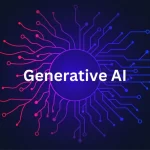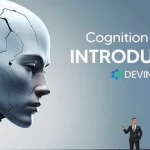
Natural language processing (NLP) for healthcare: Extracting insights from clinical notes, electronic health records, and biomedical literature
December 27, 2023I. Introduction:
A. Overview of NLP and its Potential Applications in Healthcare:
- Understanding Natural Language Processing (NLP):
- Natural Language Processing (NLP) is a branch of artificial intelligence (AI) that focuses on the interaction between computers and human language. It involves the development of algorithms and models to enable machines to comprehend, interpret, and generate human-like language.
- Potential Applications in Healthcare:
- NLP holds immense potential for transformative applications in healthcare. It enables the extraction of valuable insights from vast amounts of unstructured textual data, including electronic health records (EHRs), medical literature, patient notes, and more. NLP can contribute to clinical decision support, disease monitoring, predictive analytics, and improved patient outcomes.
B. Importance of Accurate and Timely Information in Healthcare:
- Critical Role of Information in Healthcare:
- Accurate and timely information is fundamental to effective healthcare delivery. In the dynamic and complex healthcare environment, having access to up-to-date and precise information is crucial for making informed clinical decisions, ensuring patient safety, and optimizing treatment plans.
- Clinical Decision-Making and Patient Care:
- Healthcare professionals rely on information from diverse sources to make decisions about diagnosis, treatment, and patient care. Timely access to relevant data can significantly impact the accuracy of these decisions, leading to improved outcomes for patients.
- Efficiency and Workflow Optimization:
- Efficient information retrieval and utilization streamline healthcare workflows. Quick access to pertinent patient data, medical history, and research findings enables healthcare providers to deliver more efficient and coordinated care.
C. Current Challenges and Limitations in Manual Data Extraction:
- Unstructured Nature of Data:
- Much of the valuable healthcare information is embedded in unstructured formats, such as free-text clinical notes and medical literature. Manual extraction of insights from unstructured data is time-consuming and prone to errors.
- Volume and Complexity of Data:
- The sheer volume and complexity of healthcare data, including electronic health records, make manual extraction challenging. Healthcare professionals may be overwhelmed by the amount of information, leading to potential oversights or missed opportunities for comprehensive analysis.
- Time-Intensive Processes:
- Manual data extraction processes are time-intensive and can impede the efficiency of healthcare workflows. Healthcare providers may spend significant amounts of time reviewing and extracting information, reducing the time available for direct patient care.
- Limited Scalability:
- Manual data extraction is inherently limited in scalability. As healthcare datasets continue to grow, the manual approach becomes impractical for processing large volumes of information in a timely manner.
- Inconsistencies and Variability:
- Manual extraction introduces the possibility of inconsistencies and variability in interpretation. Different healthcare professionals may extract different information from the same set of data, leading to potential discrepancies in decision-making.
In summary, the introduction highlights the potential of NLP in healthcare, emphasizing the importance of accurate and timely information in clinical decision-making. It also underscores the current challenges and limitations associated with manual data extraction, setting the stage for the exploration of how NLP can address these issues and contribute to advancements in healthcare information management.
II. How NLP Works:
A. Explanation of NLP Techniques and Algorithms:
- Tokenization:
- Tokenization is the process of breaking down text into individual units, such as words or phrases (tokens). It forms the foundational step for various NLP tasks by creating a structured representation of the input text.
- Part-of-Speech Tagging (POS):
- POS tagging involves assigning grammatical categories (such as nouns, verbs, adjectives) to each token in a sentence. This helps in understanding the syntactic structure and relationships between words.
- Named Entity Recognition (NER):
- NER identifies and classifies entities, such as names of people, organizations, locations, medical terms, and more, within a text. In healthcare, NER can extract relevant information like patient names, medical conditions, and treatment modalities.
- Semantic Role Labeling (SRL):
- SRL aims to identify the roles of different entities and their relationships within a sentence. This helps in understanding the semantic meaning of the text, especially in complex medical contexts.
- Word Embeddings:
- Word embeddings capture the semantic relationships between words by representing them as vectors in a continuous space. Techniques like Word2Vec and GloVe enable NLP models to understand word semantics and context.
- Sequence-to-Sequence Models:
- Sequence-to-sequence models, often implemented using recurrent neural networks (RNNs) or transformers, are used for tasks like machine translation and summarization. In healthcare, they can be applied to generate summaries of clinical notes or translate medical information into layman’s terms.
- Attention Mechanism:
- Attention mechanisms enhance the ability of models to focus on specific parts of the input sequence when making predictions. This is particularly useful in tasks that involve long sequences, such as document summarization or EHR analysis.
B. Examples of NLP Applications in Healthcare:
- Electronic Health Record (EHR) Analysis:
- NLP can extract valuable information from unstructured EHR data. For example, it can identify patient demographics, medical history, medications, and treatment plans from clinical notes, enabling a more comprehensive view of a patient’s health.
- Clinical Note Summarization:
- NLP techniques can be applied to summarize lengthy clinical notes, providing a concise overview for healthcare providers. This aids in quick information retrieval and supports more efficient decision-making.
- Disease and Symptom Extraction:
- NLP models can extract information about diseases, symptoms, and their associations from medical texts. This assists in building comprehensive databases, improving disease surveillance, and facilitating research.
- Information Extraction from Medical Literature:
- NLP algorithms can analyze vast volumes of medical literature to extract relevant information for research purposes. This includes identifying trends, summarizing findings, and extracting data for systematic reviews.
- Sentiment Analysis in Patient Feedback:
- NLP is applied to analyze sentiment in patient reviews and feedback. This helps healthcare providers gauge patient satisfaction, identify areas for improvement, and enhance the overall patient experience.
- Clinical Decision Support:
- NLP contributes to clinical decision support systems by processing and interpreting medical information. It aids healthcare professionals in staying updated with the latest research, guidelines, and treatment options.
- Voice Recognition in Healthcare:
- NLP powers voice recognition systems that allow healthcare providers to dictate patient notes and instructions. This streamlines documentation processes and reduces the time spent on manual data entry.
In summary, NLP techniques and algorithms play a vital role in processing and extracting meaningful information from healthcare data. The examples provided demonstrate how NLP can be applied across various healthcare contexts, from analyzing clinical notes to summarizing medical literature, ultimately contributing to more efficient and informed healthcare practices.
III. Benefits of NLP in Healthcare:
A. Improved Accuracy and Efficiency in Data Extraction:
- Enhanced Information Retrieval:
- NLP improves the accuracy of information retrieval from unstructured healthcare data, such as clinical notes and medical literature. It ensures that relevant details, including patient demographics, medical conditions, and treatment plans, are accurately identified and extracted.
- Precision in Entity Recognition:
- Named Entity Recognition (NER) algorithms within NLP enhance precision in identifying and classifying entities like patient names, medical terms, and procedures. This reduces errors associated with manual data extraction and promotes a more accurate representation of patient information.
- Semantic Understanding:
- NLP’s semantic understanding capabilities allow for a deeper analysis of medical texts. This results in more accurate extraction of the meaning and context behind the information, contributing to a comprehensive understanding of patient conditions and treatment histories.
B. Reduction in Time Spent on Manual Data Entry and Analysis:
- Automation of Tedious Tasks:
- NLP automates the extraction and analysis of information from large volumes of unstructured data, saving healthcare professionals significant time previously spent on manual data entry and analysis. This automation accelerates the overall data processing workflow.
- Streamlined Documentation:
- NLP-powered tools streamline the documentation process by converting spoken words into text. This reduces the time healthcare providers spend on manual note-taking, allowing them to focus more on patient care and less on administrative tasks.
- Efficient EHR Navigation:
- NLP applications enable efficient navigation of Electronic Health Records (EHRs) by quickly identifying and extracting relevant information. This enhances the accessibility of patient data, leading to more efficient clinical workflows.
C. Improved Patient Outcomes through Better Insights and Decision-Making:
- Informed Clinical Decision Support:
- NLP contributes to clinical decision support systems by providing healthcare professionals with up-to-date and relevant information. This assists in making more informed decisions about patient care, treatment plans, and interventions.
- Early Detection and Intervention:
- By efficiently analyzing large datasets, including clinical notes and research literature, NLP facilitates early detection of diseases and emerging trends. This early insight enables healthcare providers to intervene sooner, potentially improving patient outcomes.
- Personalized Medicine:
- NLP aids in extracting patient-specific information from diverse data sources, contributing to the development of personalized treatment plans. This personalized approach considers individual patient characteristics, leading to more effective and targeted interventions.
- Data-Driven Research Insights:
- NLP supports data-driven research by extracting valuable insights from medical literature and clinical notes. Researchers can uncover patterns, trends, and correlations, advancing medical knowledge and contributing to the development of innovative treatments.
In summary, the implementation of NLP in healthcare brings about significant benefits, including improved accuracy and efficiency in data extraction, a reduction in time spent on manual tasks, and ultimately, enhanced patient outcomes through better insights and decision-making. The transformative impact of NLP on healthcare processes underscores its role in optimizing information management and facilitating more effective and patient-centered care.
IV. Examples of NLP in Healthcare:
A. Case Studies of Successful NLP Applications in Healthcare:
- Automated Coding of Medical Diagnoses:
- Case Study: A healthcare system implemented NLP algorithms to automate the coding of medical diagnoses from clinical notes and reports. The system accurately extracted relevant information, reducing coding errors, and significantly improving the efficiency of the billing and coding process.
- Summarizing Medical Literature:
- Case Study: A research institution employed NLP to summarize vast amounts of medical literature. The system analyzed research papers, identified key findings, and generated concise summaries, enabling researchers to stay abreast of the latest developments in their fields efficiently.
- Clinical Note Analysis for Predictive Analytics:
- Case Study: A hospital integrated NLP into its EHR system to analyze clinical notes for predictive analytics. The system identified patterns and trends in patient data, allowing healthcare providers to anticipate and mitigate potential complications, leading to more proactive and personalized patient care.
- Voice Recognition for Clinical Documentation:
- Case Study: A healthcare facility implemented NLP-powered voice recognition systems to transcribe spoken words into text for clinical documentation. This reduced the time spent on manual data entry, improved documentation accuracy, and allowed healthcare professionals to focus more on patient care.
- Disease Surveillance and Outbreak Detection:
- Case Study: Public health agencies utilized NLP to analyze textual data from sources such as social media, news articles, and medical reports for disease surveillance. The system detected early signs of outbreaks, enabling timely public health interventions and resource allocation.
B. Emerging Trends and Future Prospects of NLP in Healthcare:
- Explainable AI in Clinical Decision Support:
- Emerging Trend: There is a growing focus on developing explainable AI models in clinical decision support. NLP applications that provide clear explanations for their decisions are gaining importance, enhancing the trust and acceptance of these systems among healthcare professionals.
- Multimodal Data Integration:
- Emerging Trend: NLP is increasingly being integrated with other modalities, such as imaging and genetic data. The combination of NLP with multimodal data allows for a more comprehensive analysis, supporting a holistic understanding of patient health and personalized treatment plans.
- Real-Time Language Translation for Global Healthcare:
- Future Prospect: NLP may play a crucial role in real-time language translation for healthcare professionals dealing with diverse patient populations. This can improve communication, patient engagement, and access to healthcare services in a global context.
- Behavioral Health Monitoring:
- Future Prospect: NLP could be applied to monitor and analyze textual data related to mental health, including electronic communications and social media posts. This may assist in identifying patterns indicative of mental health conditions and providing timely interventions.
- Enhanced Clinical Note Summarization with Context:
- Future Prospect: Advancements in NLP may lead to more sophisticated clinical note summarization techniques that consider the context of the entire patient journey. This could result in more nuanced and informative summaries for improved decision-making.
- Continuous Learning and Adaptation:
- Future Prospect: NLP models capable of continuous learning and adaptation to evolving medical knowledge and terminology are expected to become more prevalent. These models can stay current with the latest research and clinical practices, ensuring their relevance over time.
In summary, NLP has demonstrated success in various healthcare applications, from automated coding of medical diagnoses to summarizing medical literature. Emerging trends and future prospects point towards increased integration with other modalities, the importance of explainable AI, real-time language translation, behavioral health monitoring, and continuous learning for sustained relevance in dynamic healthcare environments.
V. Challenges and Limitations:
A. Concerns about Data Privacy and Security:
- Patient Confidentiality:
- Challenge: NLP applications often involve the analysis of sensitive patient data, raising concerns about maintaining patient confidentiality. Ensuring robust measures for data anonymization, encryption, and access control is crucial to address these privacy concerns.
- Data Sharing and Interoperability:
- Challenge: Collaborative efforts that require sharing NLP-processed data among healthcare institutions may face challenges related to data sharing and interoperability. Establishing secure and standardized methods for sharing information while complying with privacy regulations is a complex task.
- Adherence to Regulatory Requirements:
B. Challenges in Integrating NLP into Existing Healthcare Systems:
- Interoperability with EHR Systems:
- Challenge: Integrating NLP into existing Electronic Health Record (EHR) systems poses challenges related to interoperability. Ensuring seamless communication and data exchange between NLP applications and diverse EHR systems is essential for widespread adoption.
- Variability in Data Formats:
- Challenge: Healthcare data often exist in diverse formats, making it challenging for NLP systems to handle variability in data structures and document formats. Developing NLP solutions that can effectively process and extract information from different data sources is crucial.
- User Acceptance and Training:
- Challenge: Healthcare professionals may face challenges in accepting and using NLP tools due to a lack of familiarity or understanding. Training programs and educational initiatives are needed to familiarize users with the capabilities and benefits of NLP, fostering greater adoption.
- Integration with Clinical Workflows:
- Challenge: NLP integration into clinical workflows must be seamless to avoid disruptions in healthcare processes. Designing user-friendly interfaces and ensuring that NLP tools align with existing workflows are critical aspects of successful implementation.
- Scalability and Performance:
- Challenge: As the volume of healthcare data continues to grow, NLP applications must scale efficiently to handle large datasets. Ensuring that NLP solutions are scalable and performant is essential for meeting the demands of real-world healthcare settings.
- Resource Constraints:
- Challenge: Some healthcare institutions may face resource constraints, including limited access to computational resources and technical expertise. Implementing NLP may require investments in infrastructure, training, and ongoing technical support.
- Maintaining Accuracy and Quality:
- Challenge: NLP models must consistently maintain high levels of accuracy and quality in real-world healthcare scenarios. Addressing issues related to false positives, false negatives, and the impact of data variability is crucial for the reliability of NLP applications.
In summary, challenges and limitations in the adoption of NLP in healthcare include concerns about data privacy and security, difficulties in integrating NLP into existing healthcare systems, and the need to address issues related to interoperability, user acceptance, scalability, and maintaining accuracy in clinical contexts. Addressing these challenges is essential for realizing the full potential of NLP in optimizing healthcare processes and improving patient outcomes.
VI. Conclusion:
The integration of Natural Language Processing (NLP) into healthcare systems holds immense potential for revolutionizing the way we extract, analyze, and leverage information. Despite the transformative benefits, challenges and limitations must be carefully addressed to ensure the ethical, secure, and efficient implementation of NLP in healthcare.
A. Recap of Achievements:
- Enhanced Data Extraction Accuracy:
- NLP has proven instrumental in improving the accuracy of extracting valuable insights from unstructured healthcare data. Through techniques like Named Entity Recognition (NER) and semantic understanding, NLP has enabled a more precise representation of patient information.
- Efficiency Gains in Data Processing:
- Automation of tedious tasks, such as coding medical diagnoses and summarizing clinical notes, has resulted in significant efficiency gains. Healthcare professionals now spend less time on manual data entry, allowing for a more focused and streamlined approach to patient care.
- Informed Decision-Making:
- NLP applications contribute to informed decision-making by providing timely and relevant information to healthcare professionals. This leads to more proactive interventions, early detection of diseases, and personalized treatment plans that positively impact patient outcomes.
B. Reflection on Challenges:
- Data Privacy and Security Concerns:
- Addressing concerns about data privacy and security remains paramount. Striking a balance between the need for data-driven insights and safeguarding patient confidentiality requires ongoing efforts in implementing robust security measures and compliance with regulations.
- Integration Challenges in Healthcare Systems:
- The challenges associated with integrating NLP into existing healthcare systems underscore the importance of interoperability and seamless workflow integration. Collaborative efforts among stakeholders, coupled with user training initiatives, are essential for overcoming integration hurdles.
C. Future Directions:
- Explainable AI and Ethical Considerations:
- The evolving trend towards developing explainable AI models ensures transparency in NLP decision-making processes. Ethical considerations, including data bias and fairness, will continue to shape the development and deployment of NLP applications in healthcare.
- Multimodal Integration and Real-Time Language Translation:
- Future prospects for NLP in healthcare involve further integration with other modalities, such as imaging and genetic data. Additionally, real-time language translation capabilities are anticipated to enhance global healthcare accessibility and communication.
- Behavioral Health Monitoring and Continuous Learning:
- NLP’s potential role in behavioral health monitoring signifies a shift towards holistic patient care. Continuous learning capabilities in NLP models will allow them to adapt to evolving medical knowledge and stay relevant in dynamic healthcare environments.
D. Call to Action:
- Research and Collaboration:
- Continued research and collaboration among healthcare professionals, data scientists, and technology developers are essential. Addressing challenges and unlocking the full potential of NLP requires a concerted effort to bridge gaps in knowledge, resources, and expertise.
- Regulatory Compliance:
- Adherence to regulatory requirements and ethical standards must remain a priority. NLP developers and healthcare institutions should actively engage in regulatory compliance to ensure the responsible use of technology in patient care.
In conclusion, the journey of NLP in healthcare has been marked by significant achievements, transformative applications, and ongoing challenges. As we move forward, a commitment to addressing these challenges, embracing ethical considerations, and fostering collaborative efforts will pave the way for a future where NLP contributes substantially to improved healthcare outcomes and patient well-being.
















